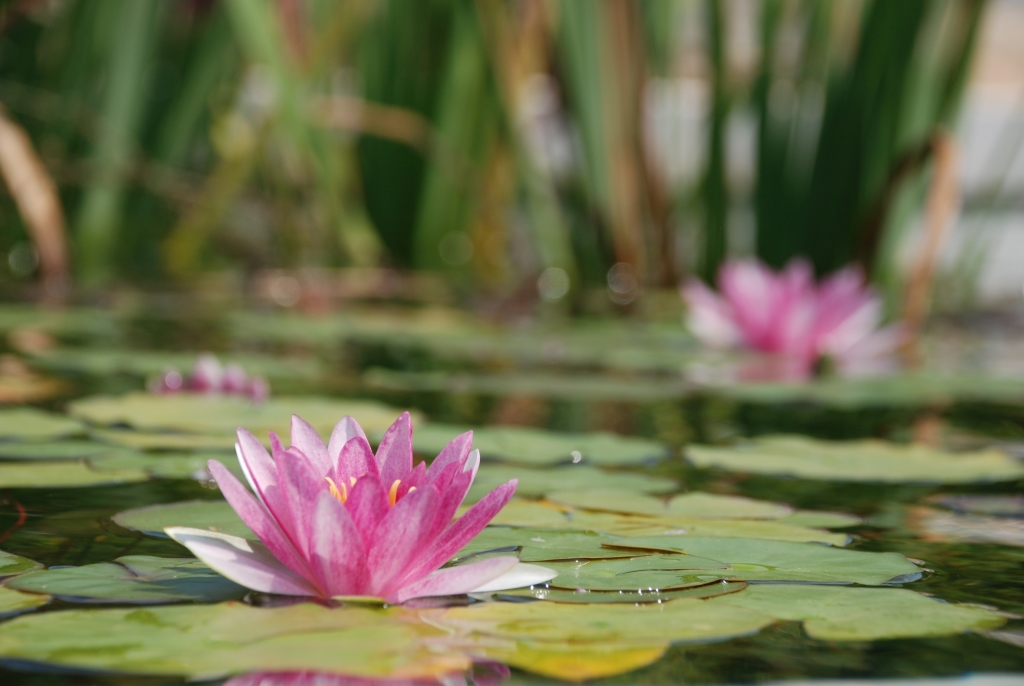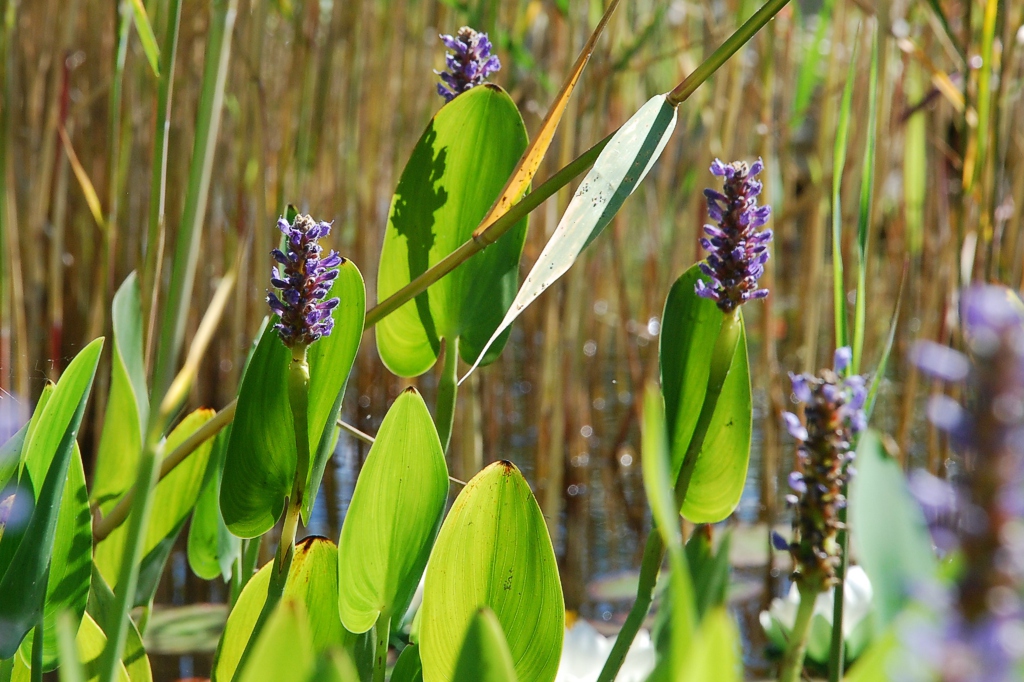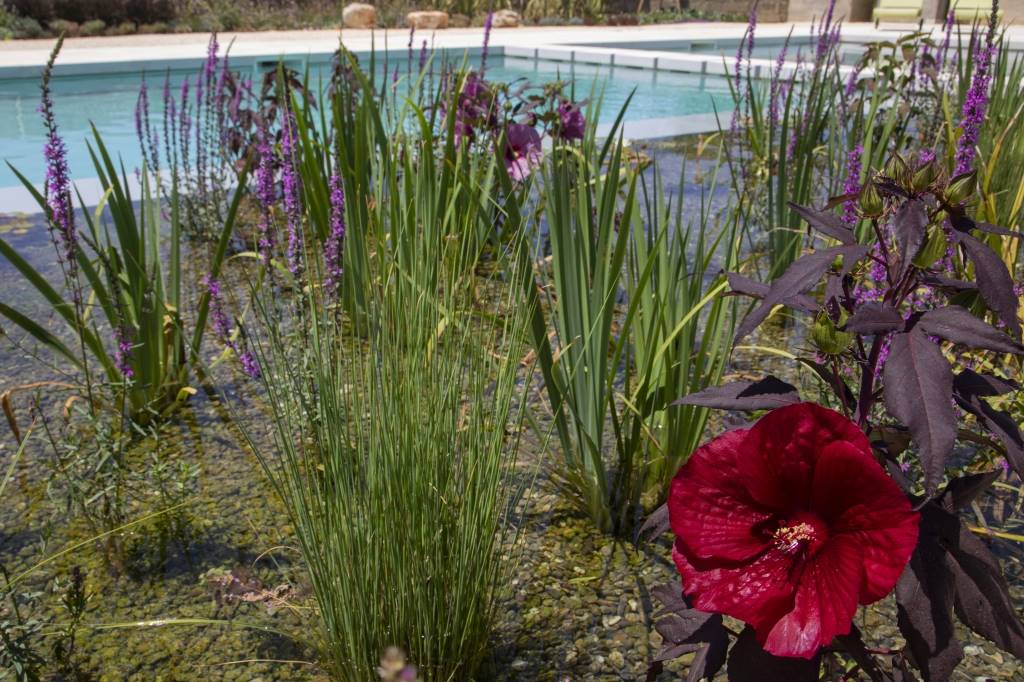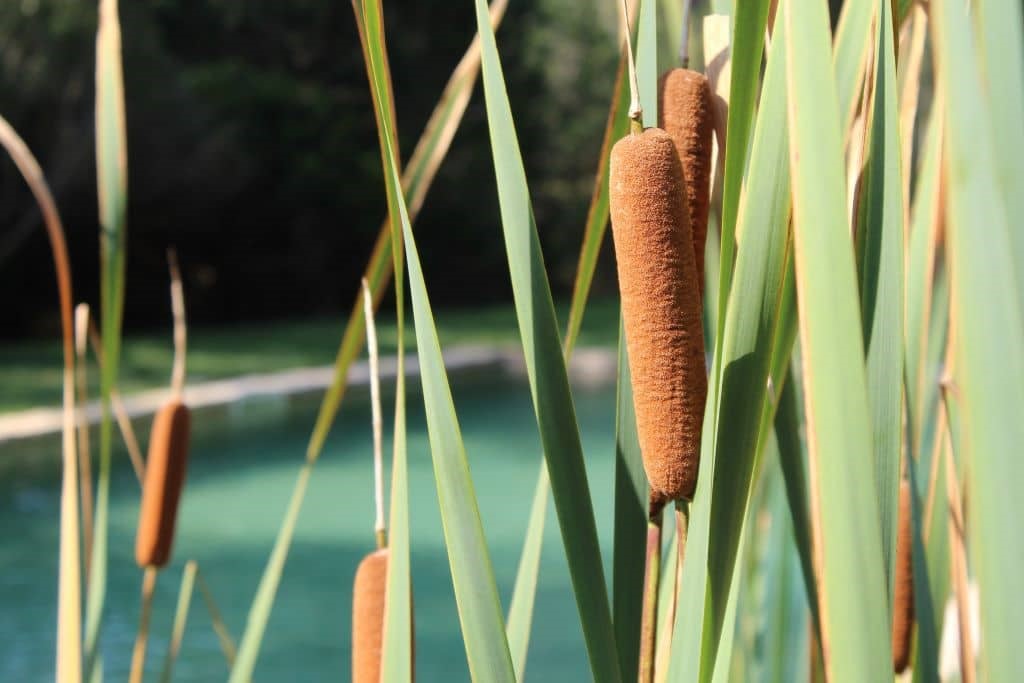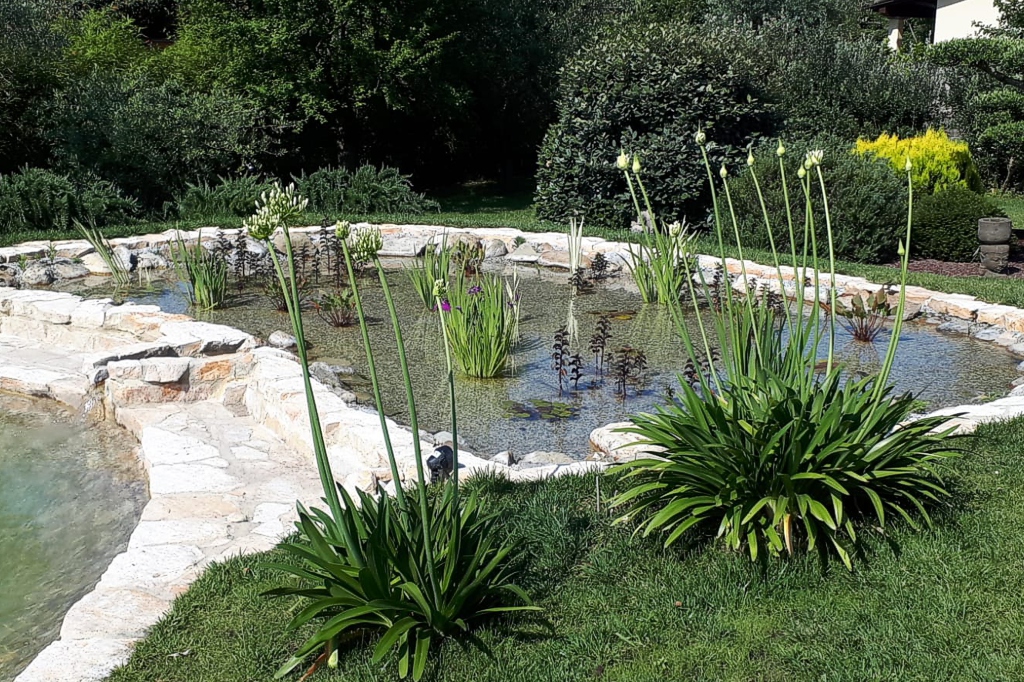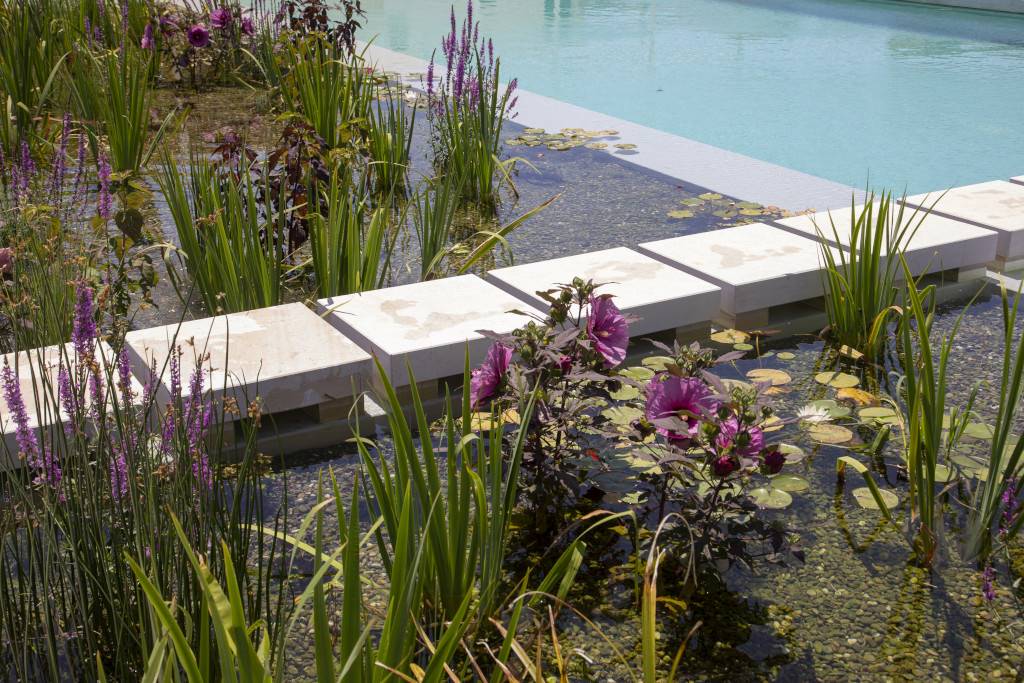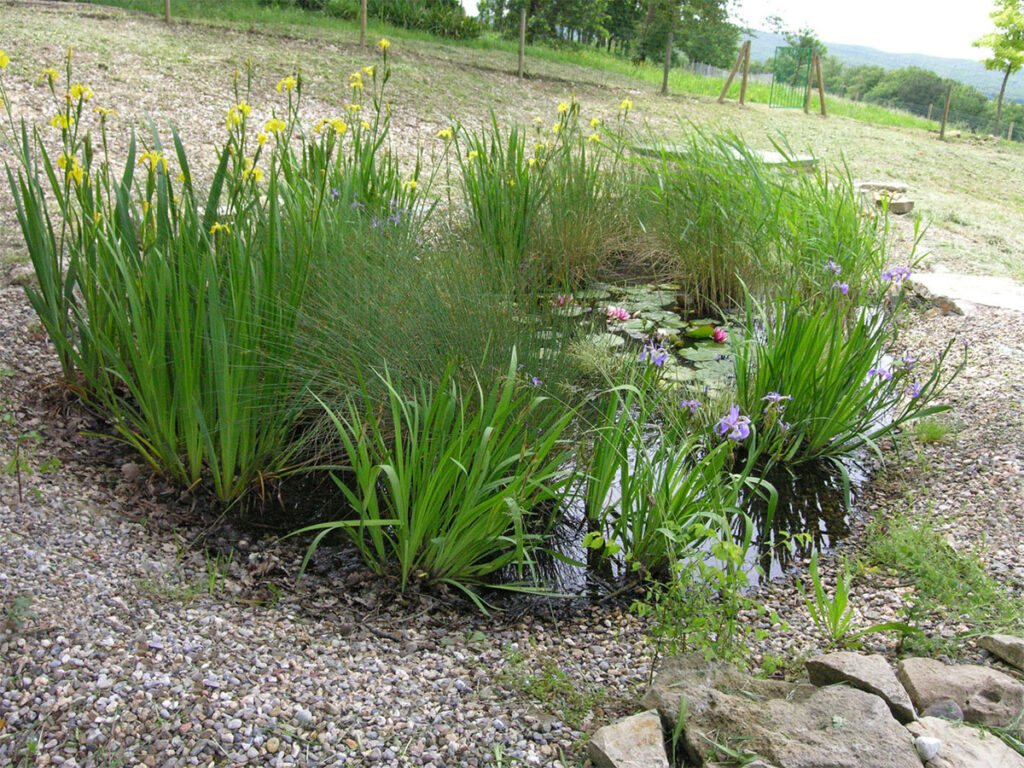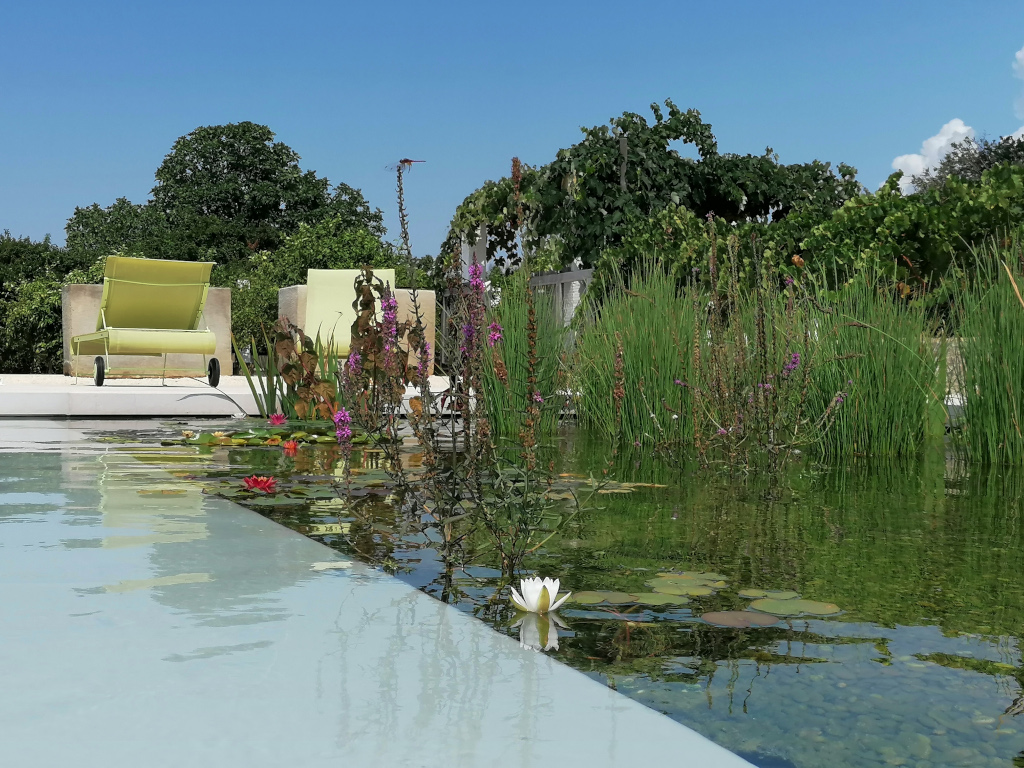WATER PLANTS
Water plants carry out irreplaceable tasks in keeping you natural pool healthy. They filter substances in suspension that cloud the water and, with the aid of their bacteria they break down complex chemical substances and neutralize harmful and toxic substances. Hence, they build a microsystem with an independent vital process.
In addition to purifying the water and preventing eutrophication, water plants are important in consolidating the embankments, thanks to their root system.
The plants absorb nutrients from the water, helping the water to stay clean.
There are five kinds of water plants:
Shore plants
They are many with a great variety of forms and blossoms. They re-establish the damaged biological balance resulting from environmental pollution.
Underwater plants
They are indispensable in producing oxygen and they root on the bio-lake floor, remaining under the water surface.
Shading plants
These plants are equipped with large leaves and, among them, are the lotus and the water lily. These very ornamental plants help shade the water surface while considerably reducing algae formation and water heating.
Emerged plants
They can be of variable height, above the water surface and many of them have a great filtering and absorbing capacity.
Plustrine plants
They live on fresh water shores and at minimal depth and do not suffer the occasional lowering of the water level. They can stand the presence of different pollutants, such as herbicides, industrial pesticides and rain. These plants can also withstand heavy metals and their roots yield oxygen to the substratum.
The natural environment is recreated in the phyto-depuration section by exploiting the properties and the balance offered by the water plants. We use species that suit our climate for their vitality and potential. The choice of plants includes accompanying plants, for their ornamental value, and leader plants, which perform water regeneration. Each species has an ecological function and, by selecting the right plants, biodiversity will not be jeopardized and the plants will thrive throughout the seasons.
The plants are placed inside the phyto-depuration after the construction of the basins is completed. At this point, water can be added. The species are chosen so that they do not excessively crowd each other. The different height and bearing of the plants is taken into consideration when designing the plant basin. If the area is swampy the temperature of the water will rise, therefore we make sure that the water can circulate continuously.
Also important are the altitude, the climate and the environmental conditions of the area where the bio-pond is to be built. Thus, there will be plants that will bloom from spring to fall with a great variety of colors. For natural swimming pools and bio-ponds, zooplankton is one of the most important factors for keeping the water clean and balanced. Therefore, fish or other animals should be kept out of the basins.


